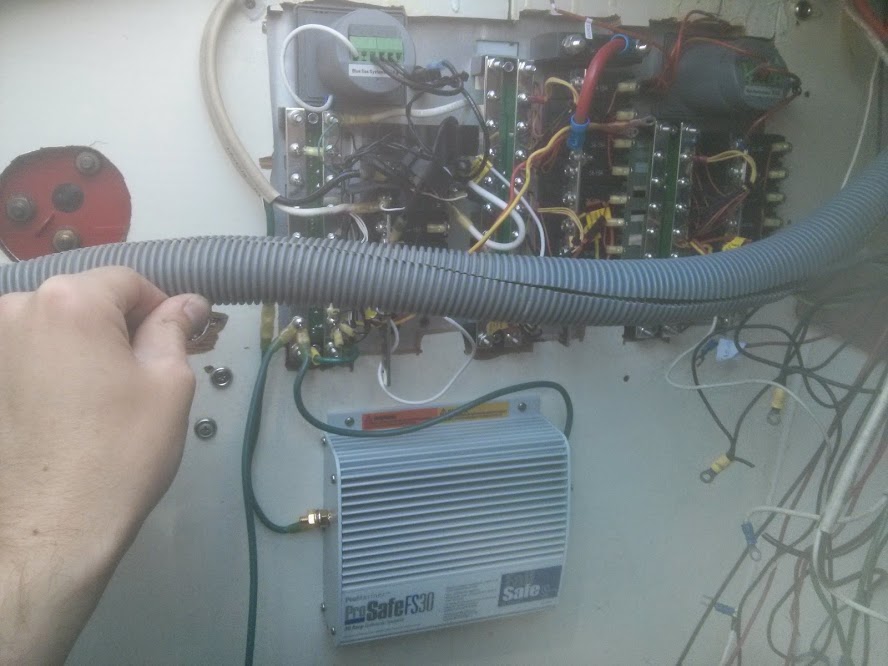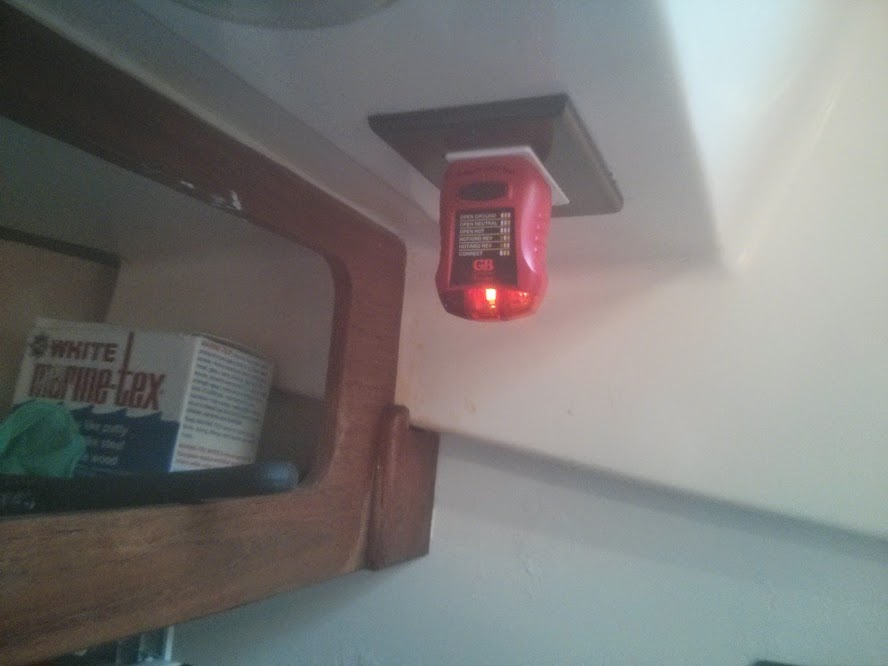With the panel mounted, and all the outlets wired, the only thing left to do was to install the galvanic isolator and connect the outlet wires to the panel.
First, the GI, which looks like this.
This interrupts the AC ground and stops any DC currents that may try to come up the AC ground (which is attached to the DC negative bus, which is attached to the engine, which grounds into the water…) which would otherwise connect your boat into a crude giant battery system with the rest of the marina, and any boats leaking DC current into the water. This tends to eat away at your zincs, and then through hulls, extremely quickly indeed.
I mounted it below the panel as shown here (the grey conduit in the center is part of the refrigerator – which I don’t think works. More to come on this at a later date)
Next, was the wiring
It’s hard to see, but the ground from the shore cable goes into one side of the GI, and then the other side goes into the ground bus. This bus then grounds onto the engine (for now – I am going to put it onto the DC negative bus once I get one up and working).
Next, attaching the outlet cables to the main panel
Once all these were hooked up – time to flip the main breaker!
…. and it flipped off again, immediately. Oh dear. I tried a couple more times and each time it flipped off instantly.
I had to leave for the night, and sadly went home.
The next day I had decided it HAD to be the ELCI – I triple checked the wiring and everything looked correct. However I suddenly had a brainwave – the multimeter was fused off the ELCI on the hot wire – BEFORE the sensor coil. The way an ELCI works is that it measures the current flow in the hot and neutral wires, and if it differs by 30mA it trips.
The multimeter doesn’t take much, but it was more than enough to trip the ELCI.
I rearranged the wires a bit and tried again.
Success! That is showing the current Voltage – it’s supposed to be 120 volts, but the voltage is a bit low from the shore power terminal. Hell yes. It also trips like it is supposed to.
Next I tried the terminals – they switched on fine.
I tested each and every outlet socket with a GFCI tester as shown – all wired correctly, and all trip correctly.
So now I have AC power!
Next up – DC power. And then running water (oh what a luxury)





One Comment